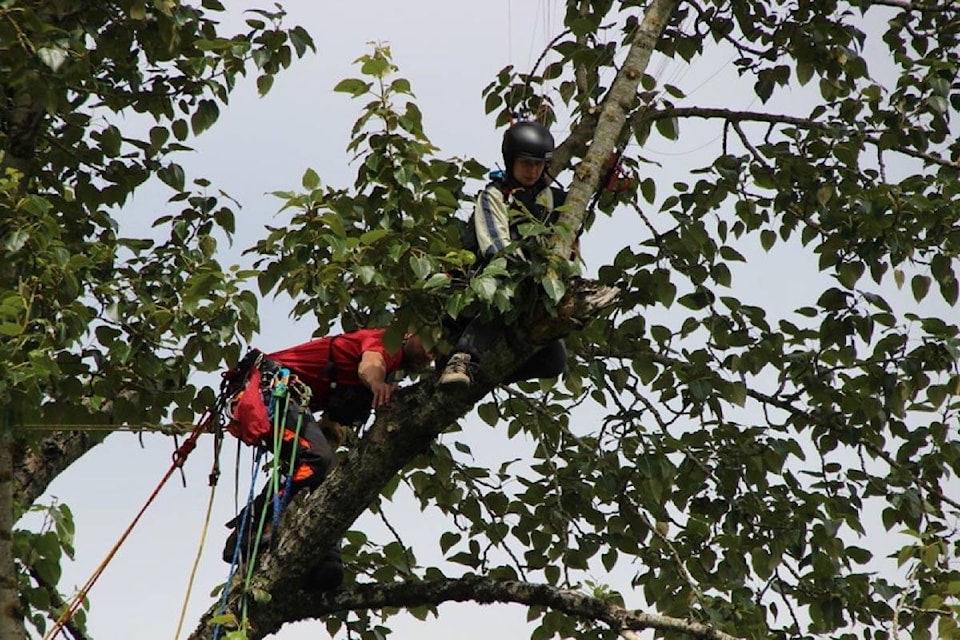A paraglider who took a wrong turn found herself stuck about 70 feet up a tree in Harrison Mills late Saturday morning.
Just before 12 p.m. emergency crews responded to a paraglider stuck in a tree near Kirby Road, not far from a popular paragliding landing base.
| The 'high angle rescue' to remove a paraglider from a tree in Harrison Mills on Saturday required a lot of manpower and took about four hours to execute. (Submitted/Shane MacKichan) |
The high angle rescue was tedious and took about four hours to execute, even with crews from Kent Harrison Search and Rescue (KHSAR), Chilliwack Search and Rescue, RCMP and BC Emergency Health Services on scene.
KHSAR manager Neil Brewer said there was an ususually low response from members called to attend the incident, and the experienced arborist usually used for tree incidents was out of town. The type of tree involved further complicated the rescue, he added.
“Most of the time, in my experience, the paragliders are much higher up the mountain and they’re typically in the tall evergreens like the Douglas Firs,” Brewer said. “[There’s] not a lot of branches to actually negotiate to get to the paraglider.
In this case it was a very big cottonwood tree, so she was about 70 feet up and she was out on a bow - a limb.”
Brewer added that it took a long time to fire the line into the right part of the tree, and scaling it was also difficult for rescuers, who used a pulley system to safely lower the paraglider to the ground.
Once she was safely removed from the tree, she was taken to Chilliwack hospital with what appeared to be minor injuries.
Brewer said paragliding isn’t low-risk by any means, but SAR only gets called to two or three incidents a year – far below the number of flights made by adrenaline junkies in the area.
“We never really hear the technical background of why [accidents happen],” he said. “It’s quite often related to thermals, the way the wind is blowing, and experience.”
